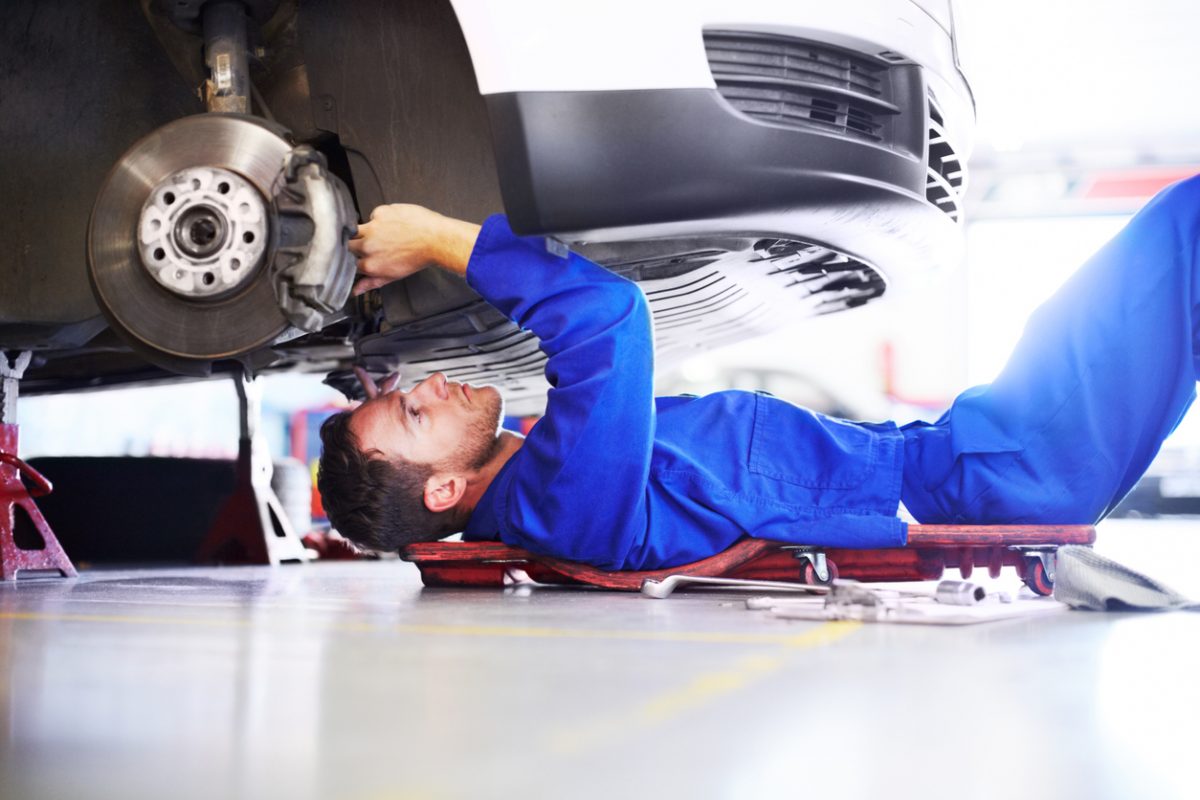Coil springs are a vital part of your car’s suspension. Appearing on each wheel, they absorb impact while you’re driving to ensure a smooth drive. But several factors can cause your coil springs to break, especially during the winter months, resulting in severe safety issues for drivers and passengers.
That’s why our car experts have come together to share the causes of coil spring corrosion, the signs to look out for, and how to make key changes that can prevent them from breaking in the future.
If you do find your car has got a broken coil spring, you can order replacement suspension and steering parts from us, supplied by top brands, that’ll get you back on the road again in no time.
What causes coil springs to break
1. Corrosion
Corrosion is the most common reason coil springs break. Coil springs are manufactured with plastic coatings around them to protect the metal from wearing on the springs.
But when the coil springs frequently expand and compress, the plastic coating can split, which exposes the delicate metal to the weather and conditions on the roads.
Freezing cold rain, combined with icy conditions and salt grit applied to roads during colder periods, all contribute to coil spring corrosion.
2. Imbalanced wheels or blown tyres
Another major factor which causes coil springs to crack is driving with blown tyres or imbalanced wheels. As road debris, such as stones, mud, twigs, and leaves, increases during the winter, this causes uneven driving conditions, which can lead to punctures or your wheels becoming misaligned.
If this happens, it means one set of your car wheels are taking more impact than the other, which means your coil springs then have to work harder to compensate for the weight. When these issues aren’t dealt with quickly, this also causes coil springs to snap.
3. Hydraulic fluid leaks
Fluid leaking from your hydraulics, such as the shock absorbers, means they won’t be functioning correctly. Because your hydraulic pressure will decrease, this puts increased pressure onto your coil springs and suspension, which can cause damage to break lines and (in extreme circumstances) the exhaust system.
How to tell if your car has a broken coil spring
1. Unusual noises
Any unusual noises you hear when you’re driving need to be looked into as soon as possible. If you’re coil springs are gradually corroding, you’ll hear a clunking or knocking noise on uneven surfaces.
2. Excessive swaying
This often happens when you’ve got imbalanced wheels or tyres that are misaligned. Because your suspension components will be hitting each other, the angles of travel will be altered. This can result in excessive bouncing, uneven steering or your car swaying more than is usual.
3. Uneven wheel arches
Another way you can tell your car has a corroded coil spring is by looking at its corners. If one corner looks lower than the others, get a tape measure and see how far your wheel arches are from the ground. If there’s a substantial difference, you could have a broken coil spring.
4. Increased braking distance
As your coil springs start corroding, the friction that exists between the tyres and the road is reduced. The effect of this is increased breaking distance, which is a dangerous hazard for yourself, others road users, and pedestrians, especially in icy conditions.
Can I drive with a broken coil spring?
You shouldn’t drive with a broken coil spring. If you don’t fix your snapped coil springs, they can cause your tyres to come loose and break apart. So you need to get your coil springs replaced as soon as possible.
How to prevent your coil springs corroding
1. Don’t overload your car
Avoiding overloading your car not only helps reduce fuel consumption, but also prevents your coil springs from gradually corroding and eventually snapping.
2. Keep your tyres in good condition
Regularly checking and maintaining your tyres will stop undue pressure being applied to your coil springs. This helps them to stay in good condition and prevent your them from cracking.
3. Drive carefully over bumps and potholes
Falling into potholes or travelling erratically on poor quality roads puts pressure on your coil springs; the more carefully you drive, the longer your coil springs will last.
4. Clean underneath your car
Regularly cleaning underneath your car throughout the winter, either with a hosepipe or a pressure washer, removes any built up grit, debris or ice, and helps to keep your coil springs in peak condition.
Knowing what causes coil springs to break and ways to prevent them corroding makes an enormous difference. If you’ve found a patch of paint that needs touching up, our step-by-step guide explains how to stop the imperfection from corroding and going rusty.



